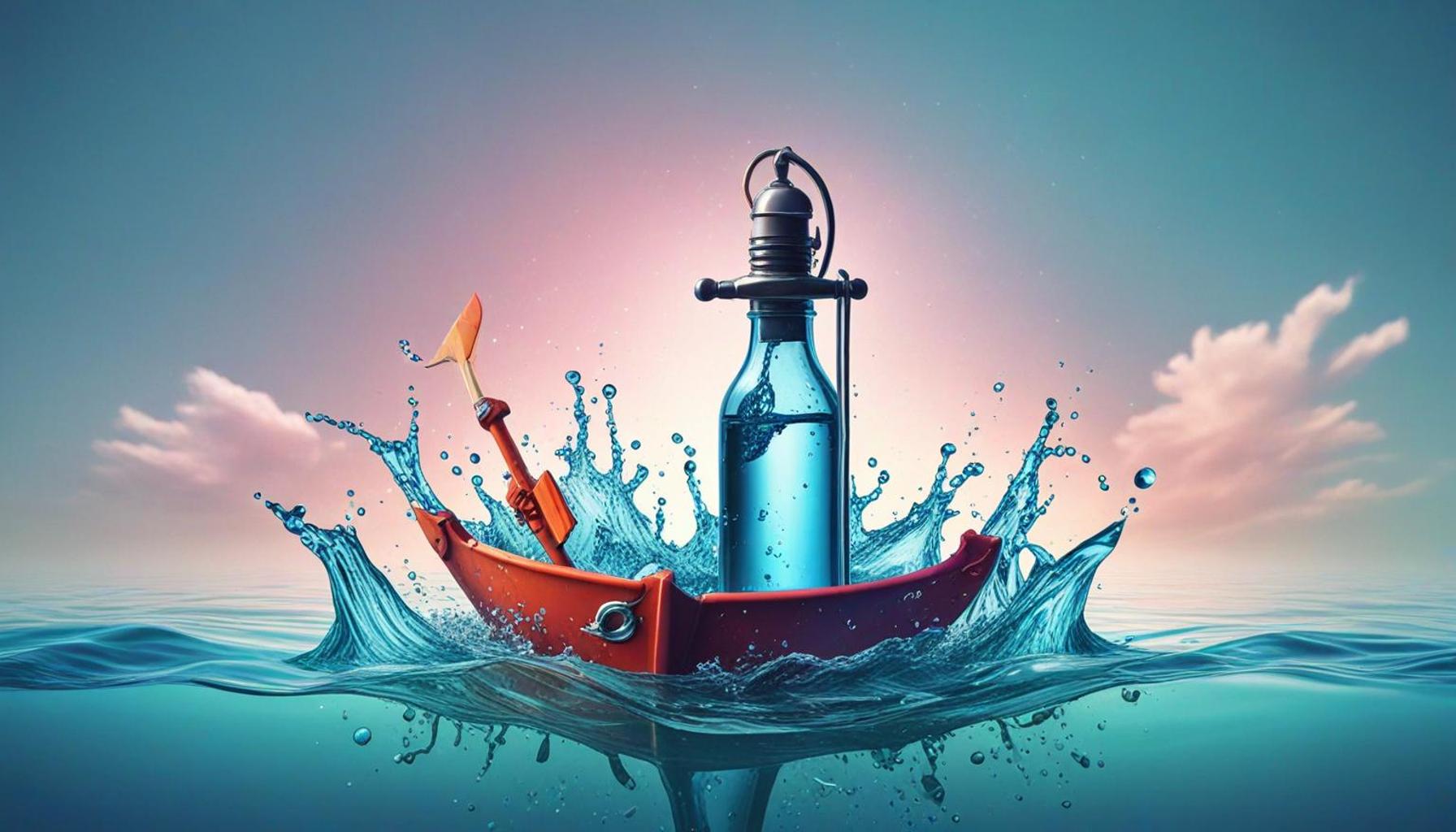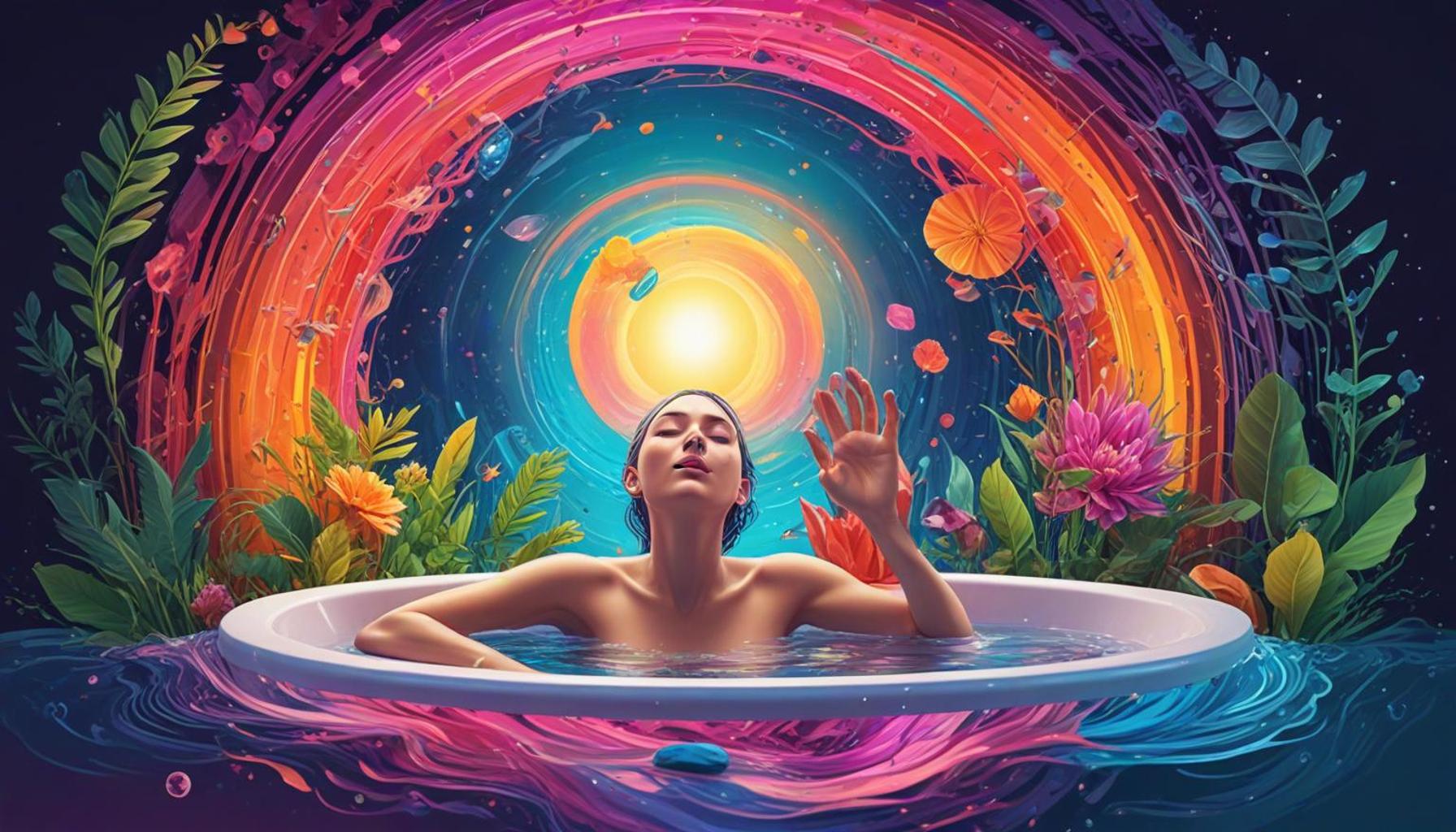Master Mindfulness Using Water Anchors for Present Moment Awareness

The Grounding Effects of Water
Water possesses a remarkable ability to ground us, providing both physical and emotional stability. Engaging mindfully with its various forms allows us to harness this natural resource as a powerful anchor for present moment awareness. In our fast-paced world, where distractions are abundant, mastering mindfulness through water can serve as a transformative practice, offering clarity and focus in our daily lives.
In Nigeria, a nation rich in water bodies such as rivers, lakes, and beaches, the therapeutic benefits of water are woven into the fabric of cultural practices. Different communities have unique ways of connecting with water, often seeking solace in its calming presence. This interaction not only serves practical purposes, such as fishing or cooking but also provides a profound sensory experience that enhances mindfulness. Take, for instance:
- Listening to the rhythmic sound of waves crashing against the shore at Lekki Beach, where many gather for relaxation and reflection.
- Feeling the refreshing coolness of a river’s gentle flow in the Jos Plateau, an experience that invigorates the body and mind.
- Witnessing the serene tranquility of a pond in a local garden, perhaps surrounded by native flora and fauna, which encourages a mindful appreciation of nature’s beauty.
These experiences facilitate a deep sensation of immersion in the present moment, encouraging mindfulness and offering a counterbalance to our busy lives. By incorporating water as an anchor, we can redirect our attention away from everyday distractions and cultivate a stronger connection with ourselves and our surroundings.
Techniques for Mindfulness with Water
This article endeavors to explore various techniques for integrating water into your mindfulness practice. By understanding how to utilize water anchors, individuals can:
- Enhance sensory awareness: Engaging with water can heighten sensory experiences, allowing individuals to connect deeply with their surroundings—whether it’s the taste of fresh water from a river or the visual beauty of sunlight dancing on the surface of a lake.
- Embrace emotional regulation: The calming effects of water can facilitate emotional healing, helping individuals to process feelings such as anxiety or sadness. Activities such as swimming or simply sitting by a water body can provide a therapeutic outlet.
- Foster deeper connections with nature: Spending time near water can invite individuals to appreciate the ecological beauty and the vital role that water plays in local ecosystems, encouraging a sense of stewardship for the environment.
Join us on this journey toward enhancing present moment awareness through the soothing influence of water. Whether by the riverbanks of your hometown or in the urban sprawl of Lagos, there lie opportunities to benefit from the grounding nature of water, leading to a more mindful and reflective life.

SEE ALSO: Click here to read another article
Harnessing Water’s Calm Through Mindful Practices
The connection between mindfulness and water offers a unique opportunity to cultivate present moment awareness. To effectively master mindfulness using water anchors, individuals can explore various engaging techniques that invite us to delve deeper into our sensory experiences. By incorporating water into mindfulness practices, we can not only enhance our emotional well-being but also transform ordinary moments into rich, immersive experiences.
One accessible way to begin is through water meditation. This practice can be performed near a body of water, whether it’s a river, lake, or even a small water feature in a garden. Sit comfortably, close your eyes, and focus on the sounds of water nearby. Take a few deep breaths, letting the rhythmic sound wash over you. As the water flows or laps against a shore, visualize your worries and distractions ebbing away, much like the water carrying leaves downstream. This creates a serene mental space that promotes awareness and clarity.
Engaging the Senses for Mindfulness
Another method to incorporate water into mindfulness is through sensory engagement. Consider the following activities:
- Touch: Dip your hands into a nearby stream or pond, feeling the cool water against your skin. Notice the sensation as it slips through your fingers—this tactile experience serves as an anchor, drawing your attention to the present moment.
- Sight: Observe the changing colors of the water, the shadows it casts, and the reflections of light. Whether the water is still at a local pond or moving forcefully in a river, recognizing these visual elements can deepen your appreciation for your surroundings.
- Sound: Focus on the soothing sounds of water flowing, splashing, or crashing. These natural sounds have a calming effect on our minds, encouraging relaxation and present moment awareness.
Utilizing these sensory experiences helps to cultivate mindfulness effortlessly. The ubiquity of water in nature, especially in Nigeria—with its numerous rivers and picturesque lakes—provides countless opportunities to embrace these mindful practices. By simply taking the time to engage our senses fully, we can find ourselves more connected to the world around us, infusing our daily lives with a sense of calm and presence.
As we proceed into deeper techniques for incorporating water into our mindfulness practice, it’s essential to recognize that the act of being near water can itself be transformational. Whether it’s the sight of the majestic Niger River or the sound of raindrops falling on rooftops, each moment offers us a chance to practice being present and fully alive.
| Advantages | Details |
|---|---|
| Enhances Present Moment Awareness | Water anchors facilitate mindfulness by directing focus to sensory experiences, promoting focused attention on the current moment. |
| Reduces Anxiety and Stress | Utilizing water anchors can mitigate feelings of anxiety by grounding individuals in the present, away from overwhelming thoughts of the past or future. |
As you delve into the practice of mastering mindfulness through water anchors, it’s crucial to understand the compelling advantages that this technique offers. The first notable benefit is that it greatly enhances your ability to maintain **present moment awareness**. When you engage with various forms of water—like a lake or the ocean—it allows your senses to absorb the soothing sights and sounds, helping you to reconnect with your immediate surroundings. Such direct sensory engagement is essential in building a stronger mindfulness practice.Another significant advantage is the reduction of anxiety and stress levels. The simple act of focusing on water can act as a natural buffer against stressors that plague your thoughts. When individuals practice mindfulness through these anchors, they embark on an emotional journey, allowing them momentarily to escape the chaos of daily life and appreciate the tranquility that surrounds them. Incorporating these elements into your daily routine can notably enhance your overall well-being, encouraging you to explore further into the practice of mindfulness with water anchors, which positively reshapes your mental landscape.
SEE ALSO: Click here to read another article
Flowing with the Present: Advanced Water Anchor Techniques
As we dive deeper into the realm of mindfulness, leveraging the intrinsic qualities of water can lead us to profound moments of awareness. Recognizing water as a vital element that symbolizes flow, adaptability, and tranquility allows us to embrace the present more fully. Here, we explore several advanced techniques designed to enhance our mindfulness journey using water anchors.
Mindful Water Journaling
One innovative practice is mindful water journaling. This technique encourages individuals to engage in reflection while being near water. Take a notepad or journal to a serene spot by the water’s edge, whether it’s a bank of the Lagos Lagoon or a quiet river in Enugu. Begin by jotting down your observations about the surroundings—how the breeze feels on your skin, the sounds of water, and the colors of your environment. This simple activity allows you to externalize your thoughts while remaining anchored to the environment around you.
As you write, embrace any emotions or thoughts that arise. Instead of resisting these feelings, acknowledge them as part of your experience. This practice of observing and recording not only enhances awareness but also provides a mechanism for emotional release, connected to the therapeutic qualities of water.
The Power of Visualization and Affirmations
Another impactful approach is incorporating visualization and affirmations while engaging with water. Find a quiet moment at a water source, and with each wave or ripple, visualize your intentions flowing into the universe. For example, picture a specific goal or desire as you watch water lap against the shore. As you visualize, affirm to yourself phrases like, “I am present. I am flowing with life.” This very act transforms the intangible into a compelling experience, rooting your affirmations in the presence of water.
Creating Rituals with Water Elements
Cultural practices surrounding water can also enhance mindfulness. In many Nigerian cultures, rituals involving water have deep spiritual significance—like washing one’s hands before meals or celebrating festivals at rivers. Consider initiating your own mindful water ritual; perhaps light a candle and reflect beside a bowl of water, symbolizing clarity and life. During this ritual, focus on what you want to release or manifest, allowing the water to serve as a purifying element in your life. Rituals can deepen your connection to the flow of life while fostering a sense of continuity and change.
Nature Walks and Water Exploration
Lastly, engaging in nature walks along waterways can uncover the profound insights water offers. Set out for a hike along the banks of the River Niger or take a stroll around any local pond. As you walk, practice walking meditation by focusing solely on the sensation of each step upon the earth, the sounds of water in proximity, and the sights nature presents. Use the presence of water as a compass to bring your mind back when it starts to wander—let its rhythm guide you to your breath.
Each of these techniques demonstrates the versatility of incorporating water as an anchor in mindfulness practices. They provide stepping stones to deeper awareness, serving to immerse us in the moment while reinforcing our connection to the life-sustaining properties of water. By harnessing these elements, individuals can discover the essence of being present in an ever-changing world.
CHECK OUT: Click here to explore more
Embracing the Flow: The Future of Mindfulness with Water Anchors
In conclusion, the journey to master mindfulness using water anchors for present moment awareness reflects a profound and enriching exploration of our emotional landscapes. By engaging with water—an element that signifies movement, clarity, and stillness—we can cultivate a deeper sense of presence in our everyday lives. Techniques such as mindful water journaling, visualization, and ritualistic practices enhance our ability to pause, reflect, and connect with the essence of the moment, facilitating profound emotional healing.
The cultural significance of water practices in Nigeria offers a unique backdrop to our mindfulness journey. From sacred river rituals to community gatherings around water sources, we can draw inspiration from these customs to establish our own mindful water rituals. By incorporating the natural rhythms of water into our daily lives, we invite opportunities for introspection, emotional release, and intentional living.
Furthermore, nature walks along waterways serve as a platform for us to reconnect with both ourselves and the environment, turning the act of walking into a mindful meditation. By allowing the sounds, movements, and reflections of water to guide us, we can skillfully navigate the complexities of modern life, anchored firmly in the present.
As we embrace these practices, may we become more aware of the transformative power water holds and its capacity to enhance our spiritual journeys. The invitation to immerse ourselves in the present moment is a powerful one, urging us to flow gracefully through life’s challenges and opportunities. In understanding and mastering mindfulness with water anchors, we not only enrich our own lives but also contribute to a larger consciousness of awareness within our communities. Let water be the anchor that guides us, as we navigate through the ebbs and flows of existence.


